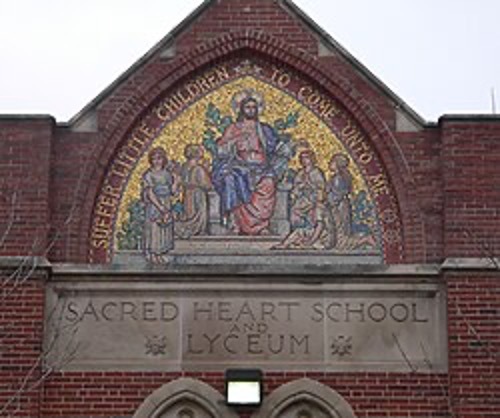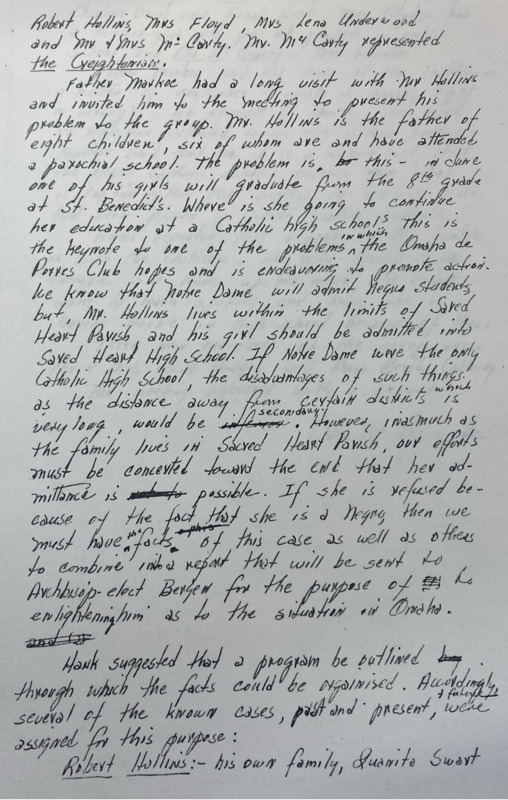Omaha Catholic Schools
Similar to other cities and majority-white parishes throughout the United States, Black Americans were often not welcome at many Catholic Church services in majority-white parishes in Omaha. Nonetheless, Black Americans showed interest in joining Catholic services as far back as the 1920s.
The origin of the parish of St. Benedict the Moor in the heart of North Omaha highlighted the disturbing depth of segregation within the Catholic Church. In 1919, Father Cassily noticed the large group of people in North Omaha without ready access to a Catholic church. Thus, he established St. Benedict’s in 1919 as a missionary church to help and convert people to Catholicism. This was the catalyst to designate St. Benedict’s as the parish in Omaha for Black Catholics. The archdiocese was ambiguous about detailing the future of St. Benedicts. Despite this ambiguity, even after Black children were finally allowed to enroll at Sacred Heart Grade School in 1948, discrimination died very slowly.
“Most early gains made by Omaha’s Black Catholics, and the Black community in general, can be attributed to the remarkable efforts of the legendary Father John Markoe and his De Porres Club. He came to Omaha at a time when the archdiocesan leadership was particularly insensitive to the needs and aspirations of racial minorities.” (Markoe Papers, B 8, F3)
In February 1948, Robert Hollins attended a DePorres Club meeting and asked for help in having his daughter, Ann, admitted to Sacred Heart High School. Ann was about to graduate 8th grade from St. Benedicts and wanted to continue her education at a Catholic high school. However, Notre Dame was the only Catholic high school that accepted black students, and it was far from where the Hollins lived. The Hollins lived within the limits of Sacred Heart High School, but the school did not accept black students.
The De Porres Club and Mr. Hollins got to work by contacting the pastor at Sacred Heart, Fr. Osdick. Fr. Osdick did not explicitly state that he would not allow Black students into Sacred Heart, but did say that they had their own parish school which they should attend. The club continued to reach out to Sacred Heart but eventually Fr. Osdick complained to Creighton University and the club was instructed not to contact Fr. Osdick again. This did not discourage the club. They knew that getting the first black student into Catholic schools was important. Fr. Markoe said that “a tremendous contribution to the elimination of prejudice would result.” (Markoe Papers, B7, F7)

